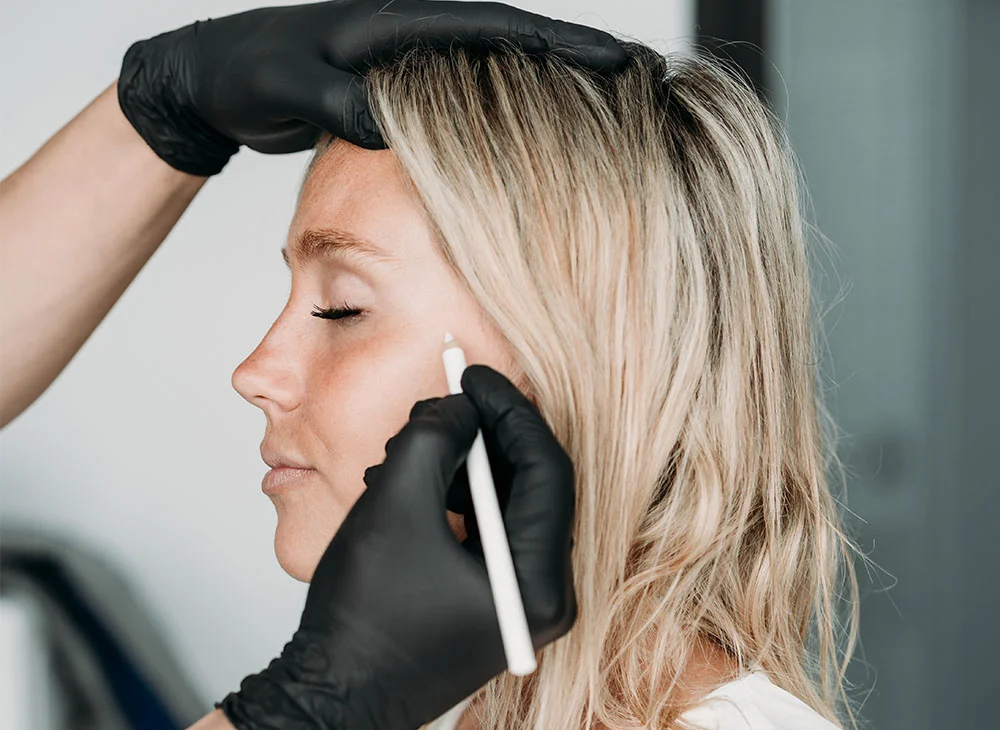Complications From Under Eye Facial Filler
The worsening of appearance of dark circles or shadowing under the eyes is a frequent problem that often brings people to seek cosmetic improvement. The “Tear Trough” area is the name given to the hollow area that starts at the inner corner of your lower eyelid and extends down into your cheek. Although the presence of a tear trough depression can be found in some people even in childhood, this area can become more apparent over time due to the following reasons:
- Normal loss of thickness of the eyelid skin with age
- Normal loss of volume and support for the cheek with age, causing the cheek to sag and the underlying rim of bone to become more visible
- The lower eyelid fat bags have become larger over time, making the hollow of the tear trough appear to stand out more (think about how much deeper a valley would look if you were standing on a mountain next to it)
For people who have deeper set eyes, the appearance of hollow areas under the eyes can also affect light reflectance patterns of the face, and can make the entire area around the eyes appear darker by creating some undesirable shadowing.
In recent years, Tear Trough Rejuvenation has become a more popular procedure, as many people are seeking to improve the appearance of dark circles under the eyes, without the time or financial commitment of surgical rejuvenation. When successful, patients are often very pleased with their appearance, and will feel that they look overall more refreshed, energetic, and youthful. The eyes are a central area of focus on the face, and they have been scientifically proven to be the most common first area that other people notice when they look at you. For some patients, non-surgical, Tear Trough Rejuvenation may be a reasonable procedure that gives excellent results to improve the dark shadowing, or even to camouflage the appearance of larger fat pockets (bags) under the eyes.
Complications from Under Eye Facial Filler
It is important to understand that the eyelid skin and surrounding areas of the face are some of the most sensitive areas of the body, and unfortunately, Tear Trough Rejuvenation may not be ideal for every individual patient. Additionally, due to the delicate and complex anatomy around the eyes, not every injector who is able to pick up a syringe and perform facial filler injections is qualified with the specific knowledge and advanced technical experience necessary to perform this procedure appropriately and effectively.
Complications from improper Under Eye Facial Filler Injections have become much more common recently, and these complications can be very noticeable and disturbing in the very visible area of the face around the eyes. The most common complication associated with Under Eye Facial Filler Injections is prolonged swelling that can create an unnatural or “overdone” appearance, which can be quite devastating. Although more significant complications with Under Eye Facial Filler Injections (Tear Trough Rejuvenation) are rare overall, unfortunately, they can occur, as with any facial filler procedure, even if the injection was performed by a qualified and skilled injector.
Some of the most common reasons for Complications from Under Eye Facial Filler Injections leading to unsatisfactory results can include the following:
